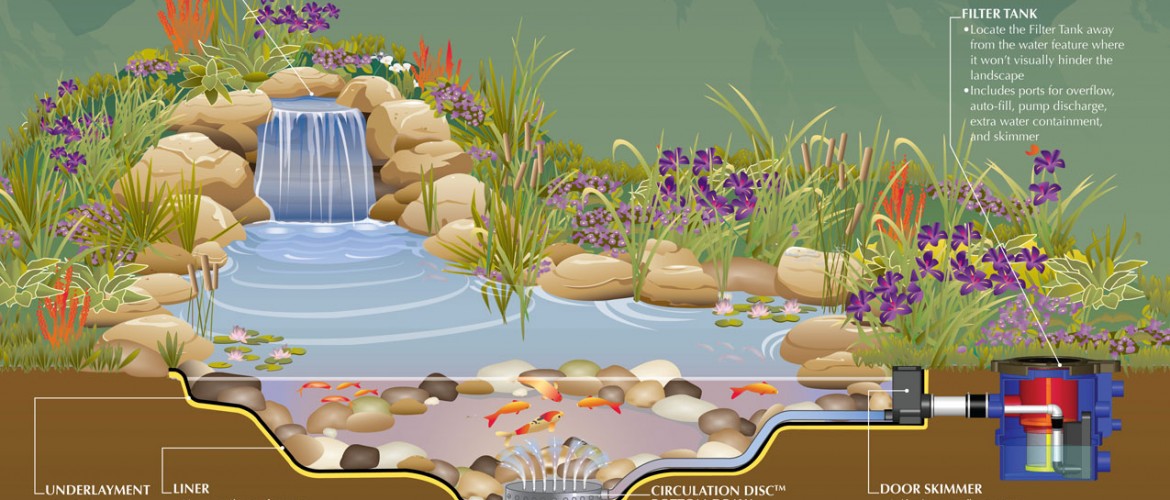Unless you are lucky enough to have a pond or lake on your property, one of the only ways you are going to get a full natural ecosystem is to make your own garden pond. This isn’t as tricky it seems, and frankly, starting from scratch has a lot of landscaping potential. After all, you get to be the hand of god and craft your environment to your desires. Isn’t that awesome?
OK, besides the fact that it takes maintenance and costs a bit of money, they do have a lot of benefits that outweigh the cons. Let’s take a look at them really quick so you can think about which elements you want to focus on for your landscaping feature.
Pros of your own garden pond
Well, we know beauty, local wildlife support, and educational value are a given. But, there is more to a pond than that.
- Water storage
- Potential food source
- Potential for fewer toxins and chemical use
- Visual and mental stimulation
Permaculture is the art of balancing nature with your needs in a harmonious way. It’s not about growing wild, but more about living healthily and sustainably. With a pond on your premises, you can start investing in this type of lifestyle. All it takes is a water storage place (the pond itself), stocked with fish (potential food source), and vegetation (adds beauty, oxygen, environmental stability, and also a potential food source).
Of course, when you have a pond, you also have a greater potential for diversity. With the right balance of plants, you can attract insects and wildlife that balance it out nearly perfectly so you can use less chemicals and toxins in your environment — that’s not only a bit healthier, but also costs a lot less money.
And, finally, you really don’t need to be told that a water feature of any sort will help you feel more at ease, but you might not realise while you’re relaxing your brain is also being stimulated. It’s true — all that nature can help stimulate the brain.
Landscaping with water is easy.
The same rules apply to a big pond that you would a container garden. It’s scaled up so you can make it more complicated as well as more delightful. Your container, pumps, and opportunities are much, much larger.
The hardest part is planning out where you would like your pond. Do you want it completely in the shade? Part shade, part sun? All in the sun? Where you choose will impact what you can plant, how much you have to replenish the water, and how carefully to monitor your wildlife. Before you start to dig, you need to dream. Here are some ideas that you can use to start daydreaming:
Follow Grace’s board Gardening: Outdoor ponds on Pinterest.
Step 1: Figure out what you want.
Are you wanting fish? Vegetation? Both? Do you want it to look like a manor estate or something more natural? Spend a few days browsing ideas, then come up with a clear picture of what you want. If you don’t have these questions answered, you’ll not be completely satisfied with your new project. And, let’s face it, ponds aren’t exactly cheap to put in, so it’s one time you really want to be sure that it’s what you want.
Step 2: Browse vegetation and see what lighting they need.
Once you have that basic idea of what you want, you’ll need to look at the types of vegetation that are out there for your needs. Are you needing a space with a lot of light, or do you just need a few clumps where fish can hide and low light will do?
Step 3: Scour your property for The Spot.
At this point, you’ll be able to find a suitable spot for your new pond, complete with whatever vegetation and fish you dream of.


